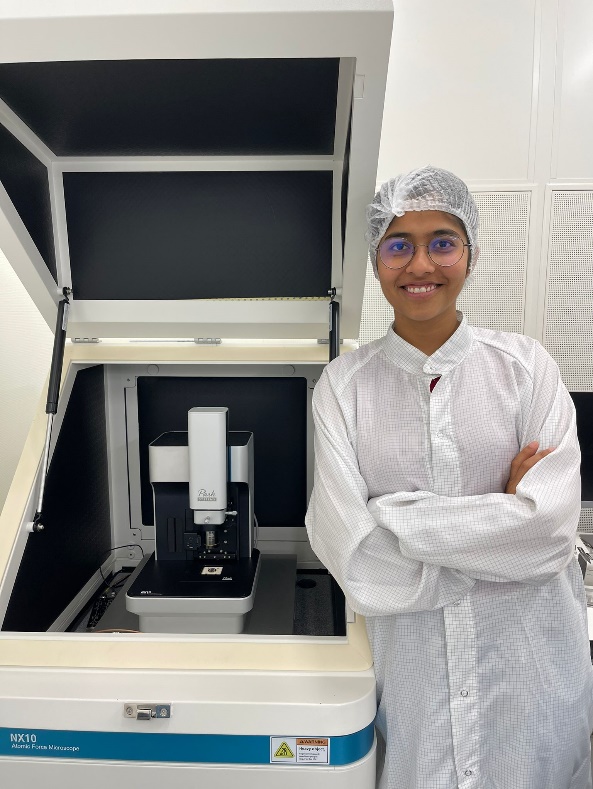
Ekta Sing is currently a PhD student in experimental Physics in the TU Dresden and the Max Planck Institute for Chemical Physics of Solids where she is working on her research title: “Tuning the ferroelectric domain wall conductivity by uniaxial pressure”.
Earlier in 2016, she received her bachelor’s degree in Science Honours in Physics (B.Sc.) in Gargi College, University of Delhi, India and continued her studies in the Indian Institute of Technology Roorkee where in 2018, she achieved her Master degree of Science. After the graduation, Ekta worked as a research intern in SBO lab IISER Pune, India where she was working on the project dedicated to the exfoliation of Phosphorene layers from bulk Phosphorus by liquid-phase exfoliation. In 2018, Ekta joined Slader/Quizlet company as a subject expert where she worked prior to her current position.
1. Please summarize the research you do and explain why it is significant?
Electronics of today is limited by fabrication, it is stationary, and limited to 2D. Here, we have developed a method to create conductive sheets in a nonconductive matrix such as lithium niobate (LiNbO3) single crystals, whose industrial production is well established. These conductive sheets, formally known as conductive domain walls, have recently attracted considerable attention among the ferroelectric scientific community due to their unique topological, optical, and electronic properties, and their potential applications such as memory devices or re-writable circuitry. The electronic properties of domain walls can be purposely tuned and studied by the application of strain. However, in the past this approach was limited to lattice-mismatched growth of thin films on selected substrates. In this research, we have used uniaxial stress to control the directionality of domain wall conductivity in single crystal z-cut 5% MgO doped lithium niobate. To analyze this effect in-situ and at the nanoscale, we combine a piezo-driven stress cell with the Park Systems NX10 scanning probe microscope. This measurement is first of its kind and it provides fundamental insights to domain wall properties.
2. How might your research be used?
Our research includes combining two different techniques such as strain technology and atomic force microscope (AFM) together. This technique opens new possibilities to understand nanoscale properties under extreme conditions such as strain. Even more, our work is also a steppingstone towards understanding the fundamental properties of the ferroelectric domain walls.
3. Why is the Park AFM important for your research?
Park System NX10 AFM provides a large sample space for our stress cell to fit in. The stage can handle a weight of up to 100 g, which gives any user the freedom to combine many exciting measurements together with AFM.
4. What features of Park AFM are the most beneficial and why?
Park AFM has an intuitive user interface, it is fast, it provides a possibility to control the system remotely and a lot of space to modify things according to a scientist's need.




